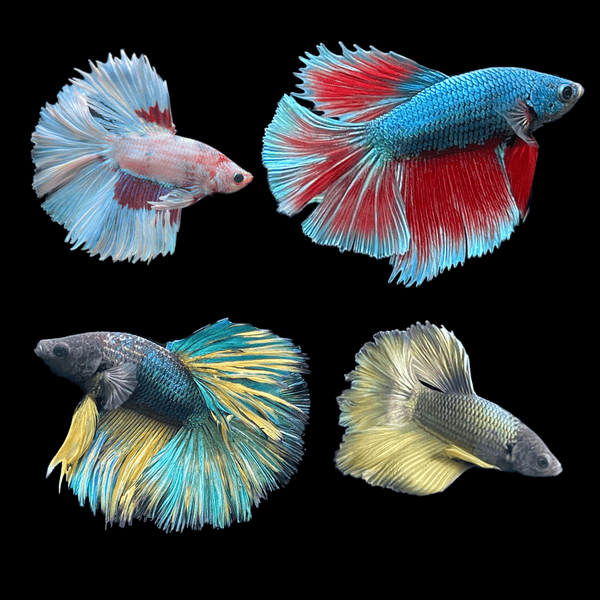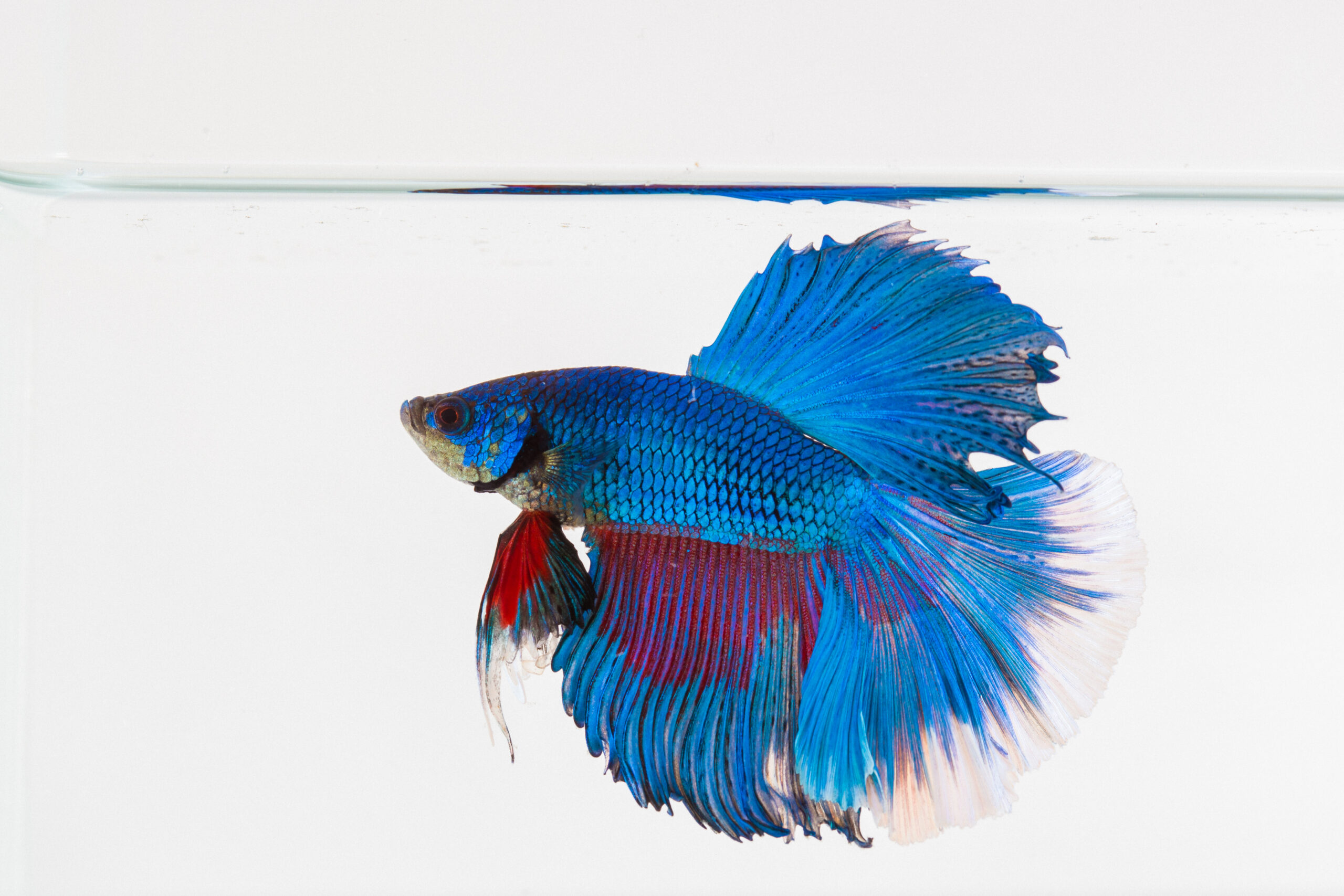Typical Betta Fish Illness and Exactly How to avoid Them
Typical Betta Fish Illness and Exactly How to avoid Them
Blog Article
Everything About Betta Fish: Understanding Their One-of-a-kind Requirements, Actions, and the most effective Practices for Optimal Treatment
Understanding the special demands and actions of Betta fish is vital for any kind of aquarist looking to give optimum treatment. betta fish. As we explore these elements further, the implications for both beginner and knowledgeable fish keepers end up being progressively obvious, elevating inquiries concerning just how ideal to suit these impressive fish in our homes.
Betta Fish Overview
Although often admired for their vibrant colors and flowing fins, Betta fish, scientifically known as Betta splendens, are intricate animals that call for details treatment to grow. Stemming from Southeast Asia, these freshwater fish are understood for their territorial nature and special habits. Betta fish exhibit sexual dimorphism, with men showing extra vivid shades and longer fins than ladies.
Their hostile tendencies, particularly amongst men, necessitate careful factor to consider when housing them. Bettas are typically kept in single-specimen containers to stop territorial conflicts. Nevertheless, they can coexist in harmony with specific compatible varieties in larger community containers, supplied the environment fulfills their requirements.

To guarantee ideal treatment, aquarists have to comprehend their one-of-a-kind behavioral qualities, nutritional demands, and habitat demands. betta fish. With appropriate focus, Betta fish can exhibit their lively individualities and thrive in a properly maintained aquarium setting
All-natural Habitat and Setting
Betta fish thrive in a diverse variety of all-natural environments, primarily found in the superficial waters of Southeast Asia, consisting of rice paddies, swamps, and slow-moving streams. These atmospheres are identified by warm temperature levels, normally between 75 ° F and 82 ° F(24 ° C and 28 ° C ), and a pH degree ranging from 6.5 to 7.5, which is ideal for their health and wellness.
In their all-natural surroundings, Betta fish are accustomed to dense plant life, supplying both shelter and breeding premises. The presence of plants such as drifting water lilies and thick lawns not only provides defense from predators but additionally adds to the oxygenation of the water, which is crucial for their respiratory requirements. Additionally, these environments often have locations of still water, allowing Betta fish to exhibit their all-natural habits such as bubble nesting.
Understanding the natural environment of Betta fish is important for aquarium lovers. Duplicating these conditions-- with water temperature level, pH balance, and the inclusion of real-time plants-- can substantially improve the total health and wellness and longevity of these fascinating fish, guaranteeing they grow in a home fish tank setting.
Social Behavior and Interactions
Recognizing the social behavior and interactions of Betta fish is crucial for successful aquarium management. Betta fish, or Siamese battling fish, are known for their distinct behavioral characteristics, defined mostly by territoriality and hostility. Men, specifically, display very hostile actions towards one an additional, bring about the notorious reputation of Betta fish as competitors. In a constrained space, two men can take like this part in fierce battles, frequently leading to injury or fatality.
On the other hand, female Bettas display less aggressive habits and can exist together in teams, referred to as sororities, if presented appropriately. Nonetheless, it is critical to check their communications very closely, as power structure and prominence can bring about problems. Understanding the dynamics within a Betta area is essential; developing concealing spots and making sure adequate room can minimize hostility.
In enhancement, Betta fish may additionally present inquisitiveness and social habits towards other varieties. While they can exist side-by-side with particular non-aggressive storage tank companions, it is important to pick suitable varieties to stay clear of stress and hostility. Generally, recognizing these social interactions is essential to promoting a harmonious fish tank atmosphere for Betta fish.
Vital Care Standards
Offering correct treatment for Betta fish is essential to their wellness and wellness. To ensure a growing atmosphere, it is important to keep optimal water problems. The water temperature must be kept in between 76 ° F and 82 ° F(24 ° C to 28 ° C), while pH levels must vary from 6.5 to 7.5. Routine water adjustments-- roughly 25% once a week-- assistance keep water quality.
Betta fish call for a suitable container dimension; a minimum of 5 gallons is suggested to give sufficient room for swimming and hiding. Include designs and plants to develop a stimulating atmosphere, but prevent sharp things that could hurt their fragile fins.

Lastly, guarantee the tank is geared up with a filter to maintain the water clean, however make use of a mild filter to avoid strong currents that can emphasize the fish. By complying with these necessary treatment guidelines, owners can advertise a healthy and balanced and vivid Betta fish.
Common Wellness Issues and Solutions
In Resources the treatment of Betta fish, understanding of typical health issues is important for maintaining their well-being. One widespread problem is fin rot, commonly triggered by bad water high quality or bacterial infection. Symptoms include frayed or discolored fins. To deal with fin rot, enhance water conditions and think about utilizing a broad-spectrum antibiotic.
An additional typical ailment is ich, a parasitical infection defined by white spots on the fish's body (betta fish). Treatment includes increasing water temperature level and including aquarium salt to the tank, as this can aid get rid of the bloodsucker
Swim bladder condition is also regularly observed, causing buoyancy issues. This problem might develop from overfeeding or irregularity. A fasting duration of 24-48 hours, adhered to by a diet plan of blanched peas, can give relief.
Lastly, bettas might suffer from velvet illness, shown by a gold dust-like appearance on their skin. Therapy usually requires medicine especially designed for outside bloodsuckers, together with enhanced container hygiene.
Routine surveillance of water criteria, preserving a clean environment, and supplying a balanced diet are crucial preventive actions. By attending to these health and wellness concerns promptly, Betta fish can lead much healthier, a lot more lively lives.
Final Thought
In summary, successful betta fish treatment requires an understanding of their one-of-a-kind needs and behaviors. Giving a suitable environment, including appropriate tank dimension and water problems, is essential for their well-being. Additionally, recognizing their territorial nature and ensuring adequate hiding places can prevent aggressiveness. Normal surveillance of health and wellness and water high quality, in addition to a well balanced diet plan, contributes to the longevity and vibrancy of betta fish. Complying with these standards will certainly promote check over here a flourishing aquatic ecosystem for these exciting animals.
Report this page